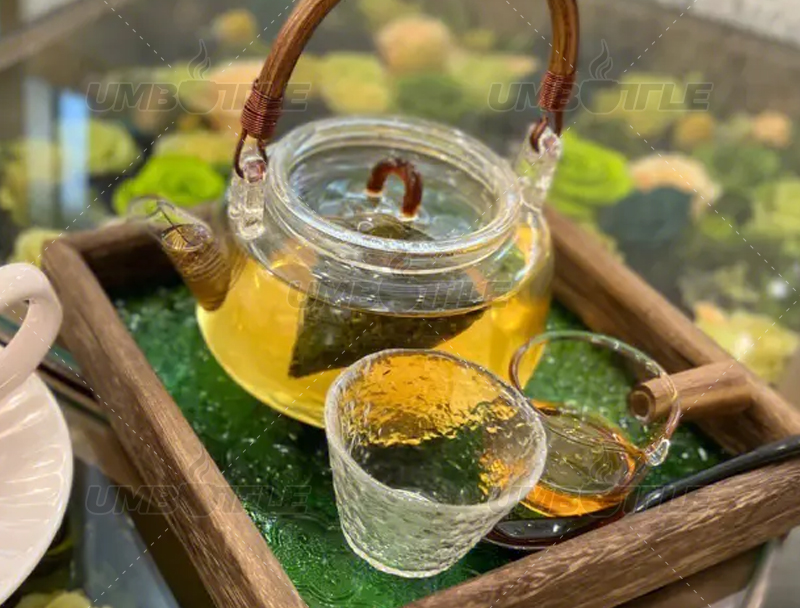What are the distinctions in tea cultures around the world?
Tea serves as a global connector, and tea cultures vary in diversity and uniqueness due to cultural, historical, and geographical differences. http://www.umbottle.com/ProductsDetail-VB-10422.htmlAnalyzing tea cultures worldwide reveals distinctive features in regions such as Asia, Europe, Africa, and South America.
Asian Tea Cultures:
Chinese Tea Culture:
China, the birthplace of tea, boasts a rich tea history. http://www.umbottle.com/ProductsDetail-VB-10422.htmlChinese tea culture emphasizes the origin, evolution, classification, and evaluation of tea, highlighting a ceremonial aspect. The intricate tea ceremony involves specific rituals in selecting tea utensils. The philosophy of Chinese tea culture is uniquely shaped by influences from Taoism, Buddhism, and Confucianism.
Japanese Tea Culture:
Japanese tea culture centers around tea ceremonies, emphasizing simplicity, nature, and tranquility. Two main schools, the Sen no Rikyū's tea ceremony (Senkei) and the Sen Soshitsu's tea ceremony (Urasenke), exist. http://www.umbottle.com/ProductsDetail-VB-10422.htmlExquisite design characterizes tea utensils like tea bowls and tea scoops. Japanese tea culture emphasizes the artistic nature and poetic ambiance of tea.
Indian Tea Culture:
In India, tea serves as a social medium deeply ingrained in society, particularly in regions surrounding the Himalayas. http://www.umbottle.com/ProductsDetail-VB-10422.htmlIndian masala chai represents the country's tea culture with its rich spices and milk. Social interaction takes precedence in Indian tea culture, with tea stalls serving as places for community exchange.
European Tea Cultures:
British Tea Culture:
The United Kingdom played a pivotal role in introducing tea to Europe. The tradition of afternoon tea exemplifies British tea culture, where people savor tea, particularly black and white tea, accompanied by cakes and sandwiches. http://www.umbottle.com/ProductsDetail-VB-10422.htmlAfternoon tea reflects the British pursuit of an elegant lifestyle and socializing.
Russian Tea Culture:
In Russia, tea-drinking is a beloved daily activity. Russians prefer strong tea paired with desserts and jams. http://www.umbottle.com/ProductsDetail-VB-10422.htmlEmphasizing family gatherings and socializing, Russian tea culture features unique tea pot designs, large and sturdy, and cups with handles suitable for the cold climate.
African Tea Cultures:
Moroccan Tea Culture:
Moroccan tea culture is showcased through the unique tea ceremony called the "Moroccan Tea Ritual.http://www.umbottle.com/ProductsDetail-VB-10422.html" Green tea, known as "Jasmine Tea," is consumed with a generous amount of mint and sugar. The tea ritual holds a significant place in Moroccan socializing, reflecting the warm hospitality of the people.
West African Tea Culture:
In West Africa, especially in tea-producing countries like Morocco and Mauritania, tea is used to entertain guests, showcasing the host's hospitality.http://www.umbottle.com/ProductsDetail-VB-10422.html The unique preparation involves special tea pots and cups, sweetened generously, creating a distinct flavor.
South American Tea Culture:
Argentine Tea Culture:
Argentinians are known for drinking mate tea. Made from a plant in the South American Amazon region, mate tea is believed to have invigorating effects. http://www.umbottle.com/ProductsDetail-VB-10422.htmlArgentinians often use a specialized straw to drink directly from a shared cup, reflecting a spirit of socialization and sharing.
North American Tea Culture:
American Tea Culture:
In the United States, tea culture is influenced by various countries, including England, China, and others. While coffee is more popular, tea has its place in American culture, with iced tea being a common choice. http://www.umbottle.com/ProductsDetail-VB-10422.htmlVarious tea drinks are popular in cafes, and tea is gradually playing a significant role in American lifestyles and health perspectives.
Tea cultures worldwide showcase diversity influenced by geographical, cultural, and historical differences. The distinct characteristics of Asian, European, African, and South American tea cultures reflect unique understandings and pursuits of tea in different societies. http://www.umbottle.com/ProductsDetail-VB-10422.htmlTea is not just a beverage; it represents the inheritance of culture and a way of life. With tea as a companion, people around the world savor the beauty of life through tasting.

Dongguan Zhanyi Commodity Technology Co., Ltd. specializes in the production of metal cups, plastic cups, coffee cups, suction mug, lunch boxes, food jar, travel mugs, portable water bottles, sports bottles, home life desktop trash cans, thermos bottles, etc.These products are all our annual exports, and are recognized and loved by the US, Europe, Australia, Japan, South Korea, Taiwan, Hong Kong and other consumers. Support for small quantity order, fast customization.